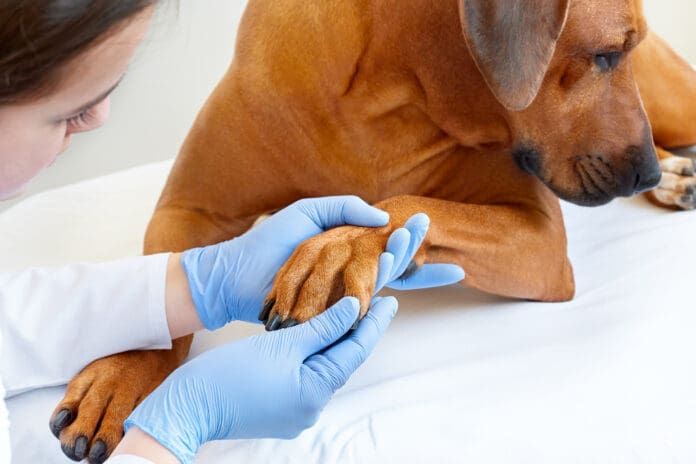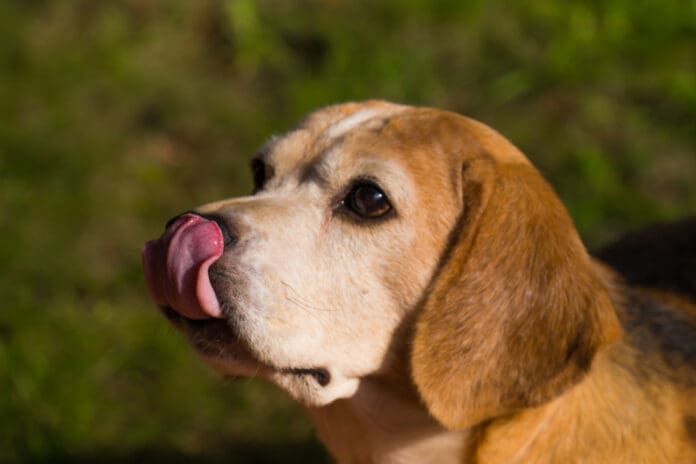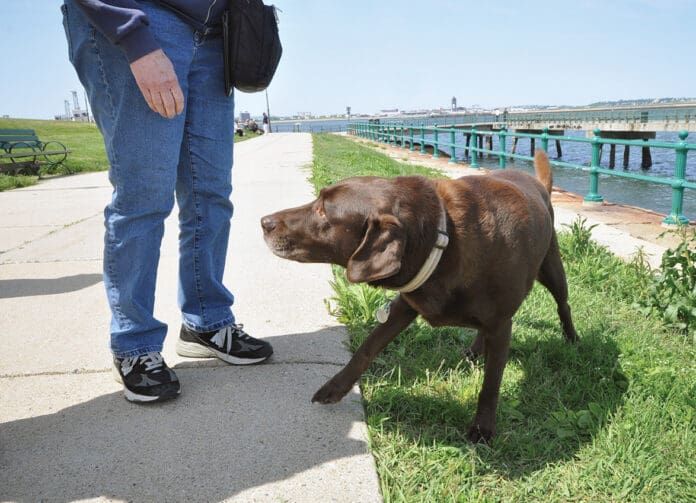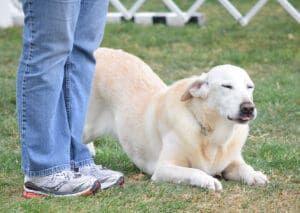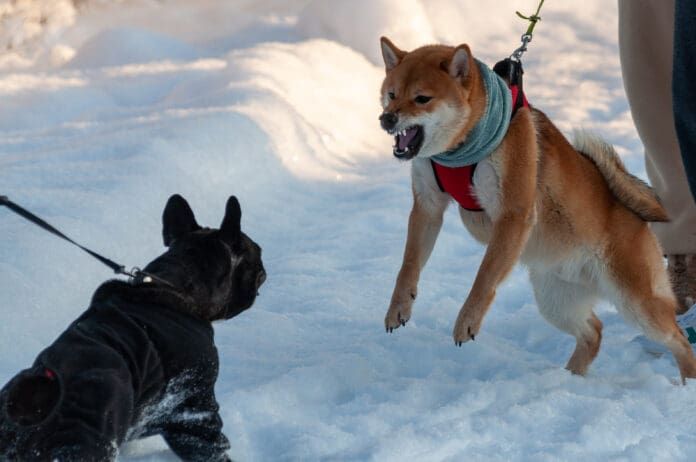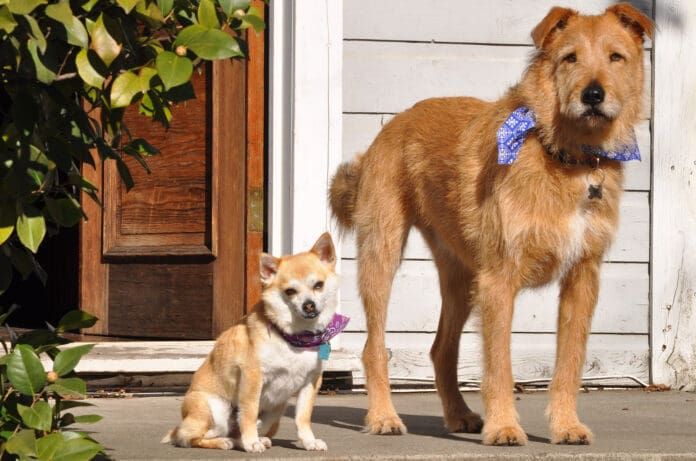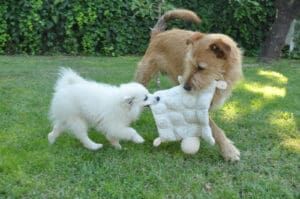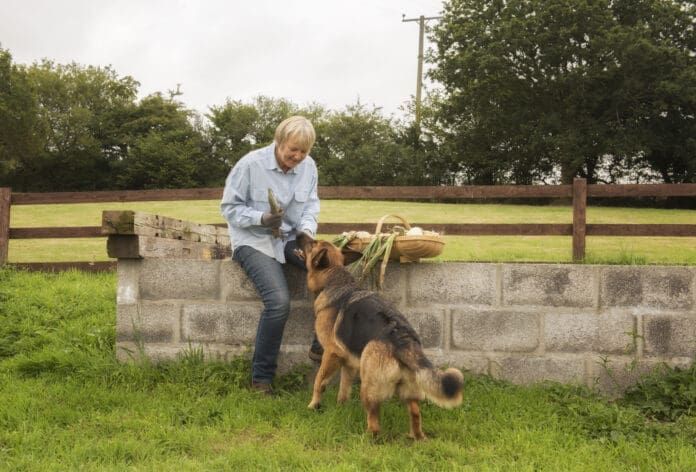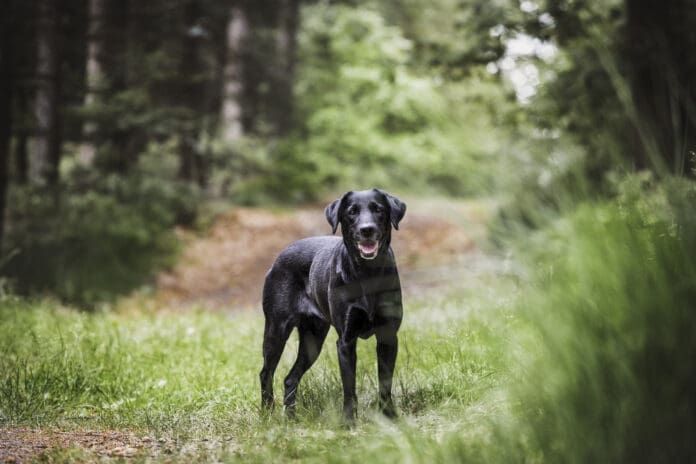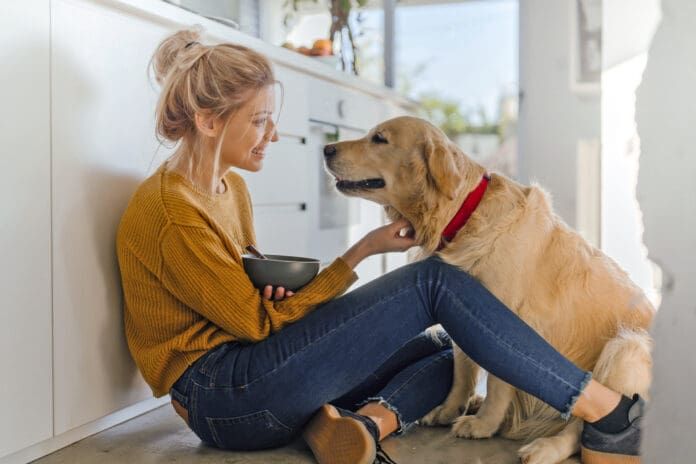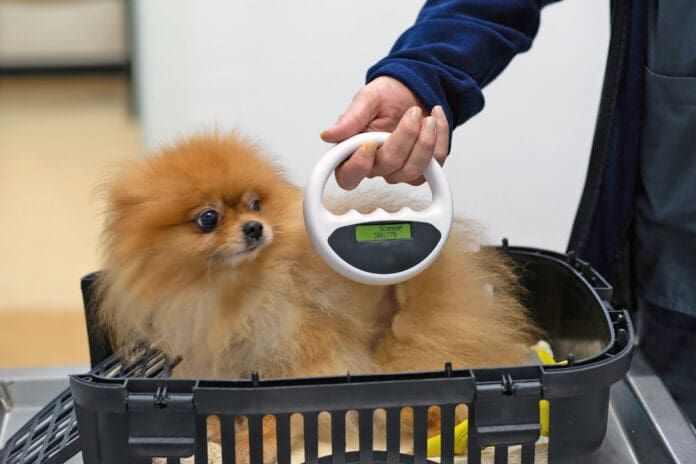Dog fungal infections can be classified as one of three types—systemic, skin, or ear fungal infections. Systemic fungal infections affect one or more body systems. Skin or ear fungal infections affect only the skin or ears.
Systemic Fungal Infections
Most systemic dog fungal infections are caused by inhaling fungal spores from the environment. These infections begin in either the nose or the lungs. They may spread to other areas of the body via the bloodstream or the lymphatic system. Systemic fungal infections are not common in dogs but may be more prevalent in certain areas of the United States.
Cryptococcosis
Cryptococcosis is caused by fungi in the species Cryptococcus, such as Cryptococcus neoformans and Cryptococcus gattii. Cryptococcus is found primarily in soil and bird droppings, particularly the droppings of pigeons. This fungus has no geographic predilection and is found throughout the world.
Symptoms of cryptococcosis include generic nasal signs—such as sneezing, snorting, and nasal discharge—along with sudden blindness, difficulty walking in a straight line, sudden behavior change, and seizures.
Blastomycosis
Blastomycosis is caused by the fungus Blastomyces dermatitidis. Blastomyces prefers an environment of moist soil and decaying leaves along waterways and swamps. It is found in the following geographic regions of North America:
- Mississippi, Missouri, and Ohio River valleys
- Mid-Atlantic states
- South-central states
- Southern regions of the Canadian provinces of Saskatchewan, Manitoba, Quebec and Ontario
Symptoms of blastomycosis include coughing, fever, decreased appetite, weight loss, and lethargy. Other symptoms may appear depending on where the infection has spread—these include:
- Open skin sores that drain fluid or pus
- Blindness
- Lameness
- Seizures
- Swollen testicles
- Enlarged lymph nodes
Histoplasmosis
Histoplasmosis is caused by the fungus Histoplasma capsulatum. Histoplasma prefers to proliferate in dust and soil that contains bird or bat feces. It has been reported in several Central and Eastern states, particularly states that include the Mississippi and Ohio River Valleys.
Histoplasma infects its host when the spores of the fungus are inhaled or ingested. Once the fungal spores enter the lungs or the gastrointestinal tract, they can spread to other areas of the body through the bloodstream or lymphatic system.
Symptoms of histoplasmosis include coughing, fever, diarrhea, black and tarry stools, straining to defecate, weight loss, decreased appetite, and lethargy. Other symptoms may appear depending on where the infection has spread—these include:
- Open skin sores that drain fluid or pus
- Blindness
- Lameness
- Seizures
- Enlarged lymph nodes
Coccidioidomycosis (also known as Valley Fever)
Coccidioidomycosis is caused by the fungi Coccidioides immitus and Coccidioides posadasii. Coccidioides is found primarily in the southwestern United States, including California, Arizona, Nevada, Utah, New Mexico, and Texas. It is the pathogen behind Valley Fever in dogs. There have also been reports of the fungus being found in south-central Washington State.
The most common symptom of coccidioidomycosis is a chronic cough. Other symptoms may appear depending on where the infection has spread—these include:
- Open skin sores that drain fluid or pus
- Blindness
- Lameness
- Seizures
- Enlarged lymph nodes
- Fever
- Decreased appetite and weight loss
Aspergillosis
Aspergillosis is caused by fungi in the class Aspergillus. Aspergillus is found in both indoor and outdoor environments. It prefers to grow on food, dead leaves, and compost piles. There are many species of Aspergillus but only a small number of them can cause disease in dogs.
Healthy dogs have immune mechanisms in place to prevent inhaled Aspergillus spores from causing disease. Dogs that are immunocompromised or that are taking immunosuppressive medications are at increased risk of developing aspergillosis.
The most common symptom of aspergillosis is a chronic, foul-smelling nasal discharge that does not respond to antibiotic therapy. Nasal discharge often comes from only one nostril and may be bloody. The nostril may become irritated and ulcerated.
Other symptoms may appear depending on where the infection has spread—these include:
- Open skin sores that drain fluid or pus
- Blindness
- Lameness
- Seizures
- Enlarged lymph nodes
- Fever
- Decreased appetite and weight loss
Skin and Ear Fungal Infections
Skin and ear dog fungal infections are typically caused by an overgrowth of the yeast Malassezia pachydermatis. This is a yeast that is a normal part of the skin and ear flora. The exception is dermatophytosis, also known as ringworm. This fungal infection of the skin is caused by contact with a fungus in the environment.
Dermatophytosis (ringworm)
Dermatophytosis is caused by the fungi Microsporum canis, Microsporum gypseum, and Trichophyton mentagrophytes. It is known as ringworm because the red, raised circular lesion that occurs in people looks like a worm in the shape of an undulating ring under the skin. This is not how the lesion appears in dogs!
Ringworm lesions in dogs may include hair loss, scaling or crusting of the skin, and small raised circular nodules called papules. These lesions can be itchy, so dogs may scratch at or lick these lesions.
Dogs can contract dermatophytosis from direct contact with an infected cat or dog (Microsporum canis), soil contaminated with ringworm spores (Microsporum gypseum), or an infected rodent or other small animal (Trichophyton mentagrophytes). Dogs can also develop ringworm lesions after being groomed with contaminated clippers or other grooming tools. Dogs can contract dermatophytosis from infected humans.
Healthy adult dogs are usually able to resolve solitary ringworm lesions on their own without treatment. Puppies, senior dogs, and dogs that are immunocompromised are more likely to develop multiple ringworm lesions. The immune systems of these dogs are either too immature or not strong enough to effectively clear a ringworm infection. They will require treatment to resolve their dermatophytosis.
Ringworm is zoonotic—this means that you can get ringworm from your dog. And your dog can get ringworm from you! For this reason, even healthy adult dogs that are expected to resolve their infection may receive treatment. Treatment for ringworm will shorten the amount of time it takes to resolve ringworm lesions, thereby reducing the chance of transmitting ringworm to others.
Ringworm can be a common occurrence in animal shelters and other high density housing situations. Ringworm is not common in dogs residing in typical family households.
Fungal Dermatitis and Otitis
Fungal dermatitis and otitis—also known as a yeast infection of the skin and ears—is caused by an overgrowth of a yeast called Malassezia pachydermatis. Your dog’s skin naturally has Malassezia as well as bacteria growing on its surface. This population of yeast and bacteria is called the normal skin flora. It is part of the skin’s immune system and keeps fungi and bacteria from growing on the skin surface that can cause your dog harm.
An infection with Malassezia is often secondary to another underlying skin or ear condition. Atopic dermatitis is a common underlying cause of fungal dermatitis and otitis. Increased moisture in the ear canals or skin folds promotes an overgrowth of Malassezia.
Symptoms of a fungal ear infection include a brown, greasy, often smelly discharge from the ears, redness around the ear canal opening, and scratching at the infected ear. Other symptoms include shaking the head, holding one ear flap close to the head, and sensitivity about having the infected ear touched.
Fungal dermatitis can cause the skin to become red, itchy, flaky, and have a musty odor. Skin can also become thickened and look like the skin of an elephant. Chronic fungal skin infections can cause the skin to become hyperpigmented (black). Dogs with fungal dermatitis will excessively lick or scratch at the affected skin.
Fungal dermatitis and otitis are common in dogs. Dogs that have an underlying skin condition—such as atopic dermatitis, seborrhea oleosa (oily skin) or an endocrine disorder—are more likely to develop fungal dermatitis and otitis. Certain breeds of dogs may be genetically predisposed to developing fungal dermatitis and otitis. These include the West Highland White Terrier, Basset Hound, Cocker Spaniel, Silky Terrier, Australian Terrier, Maltese Terrier, Chihuahua, Poodle, Shetland Sheepdog, Lhasa Apso, and Dachshund.
Thankfully, fungal dermatitis and otitis are not contagious conditions. This means that if one dog in your family is afflicted with this condition, he cannot transmit it to any other animals (or humans!) in your home.
Conclusion
Systemic fungal infections in dogs are not common but can be seen more often in certain geographic regions. If you have any concern that the symptoms your dog is exhibiting could be caused by a systemic fungal infection, have your dog evaluated by his veterinarian as soon as possible. Be sure to mention your concerns to his veterinarian. The systemic fungal infections described in this article can be treated successfully if diagnosed early.
Skin and ear fungal infections are less serious than systemic fungal infections but can negatively impact your dog’s quality of life. Your veterinarian may recommend a diagnostic workup to identify the underlying condition so that your dog can receive appropriate treatment.


